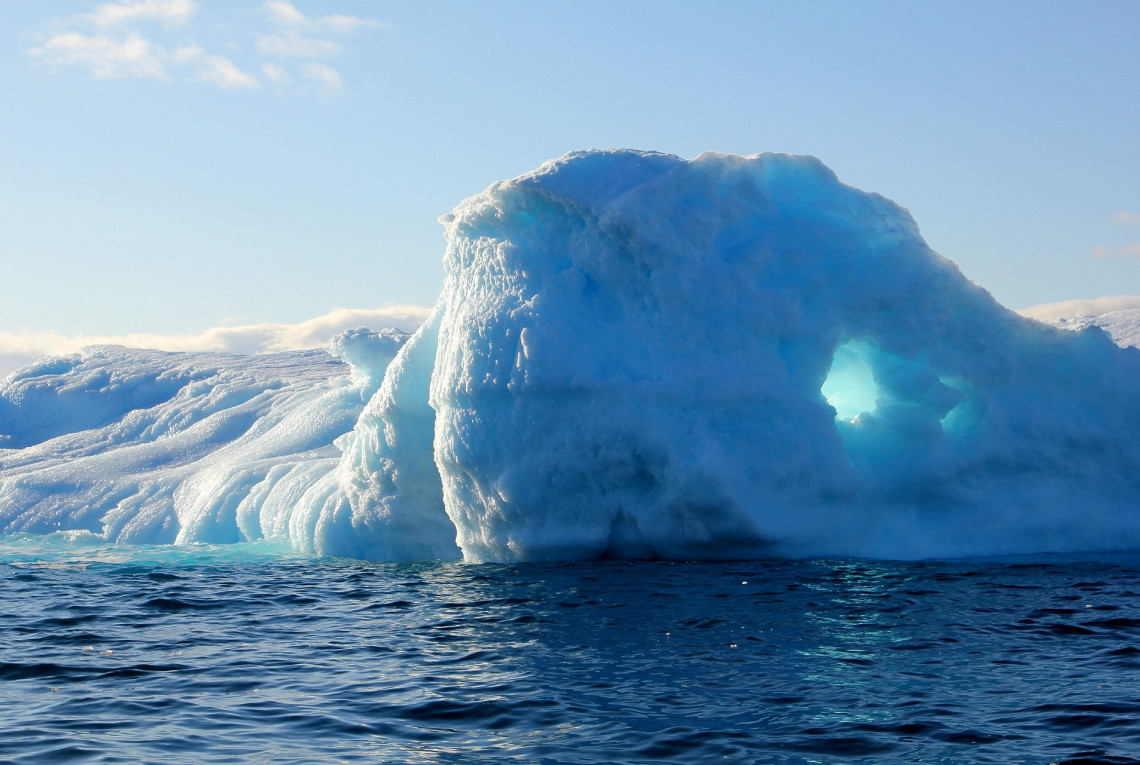Why are ice sheets important for our climate?
Author: Ulrike Schneeweiß
Thick and extended masses of ice on land are called ice sheets. They form when the pressure of gradually accumulating snow transforms the underlying layers into ice. New snowfall continually creates new ice, while pressure and geothermal heat often cause some melting below the surface. Due to a combination of increasing weight and sliding on the partly melted undersurface, masses of ice flow slowly and steadily outward from the center. Where sheets of ice flow into the ocean, they form ice shelves on the surface. Today the largest ice shelves are those surrounding the Antarctic. Ice that forms on the surface of the ocean is called sea ice.
Today there are two ice sheets on our earth
The Antarctic ice sheet, with an area of about 13 million square kilometers, covers our planet’s southern polar cap. In contrast, the North Pole is covered by floating sea ice that varies in thickness and extent with the seasons. At only 1.7 million square kilometers, the Greenland ice sheet is much smaller than its Antarctic counterpart. Most of Earth’s freshwater is stored in the two ice sheets.
Ice sheets develop over extremely long periods. The Antarctic and Greenland ice sheets we know today formed over the past 30 to 40 million years. The bright surface of snow and ice reflects most of the incident sunlight without generating heat. This effect keeps the ice sheets cold, stabilizes them over long periods, and can promote their growth. They reach several thousand meters in thickness and influence the climate in their vicinity.
Ice sheets and their influence on the climate
Scientists use satellite imagery and measurements made in the field to determine the extent and thickness of the ice sheets. At first, the Antarctic ice sheet was considered extremely stable since it’s subject to only minor temperature fluctuations and reflected sunlight keeps the masses of ice cold. Greenland, on the other hand, is located in a warmer climate zone and its ice sheet shows greater seasonal variations. However, reviews of data collected over the past 40 years show that mass loss is significant for both ice sheets. The losses from the Antarctic ice sheet are lower in relation to those of the Greenland sheet but are also increasing. Just as reflected sunlight favors the expansion of ice sheets, their thawing is also self-reinforcing: Meltwater in cracks and crevices warms the ice, and where sunlight reaches areas of exposed ground or water, those areas radiate heat back into the ice.
“Intact ice sheets have an important influence on climate because they reflect a significant portion of solar radiation back into space. They also regulate the sea level and the coastlines of the continents,” says Gerrit Lohmann, a climate dynamics expert at the Alfred Wegener Institute. “Our observation programs and modeling help us to understand the dynamics of the ice sheets on Greenland and Antarctica. That’s important in helping us take action to slow the retreat of the ice sheets and avoid irreversible damage.”






